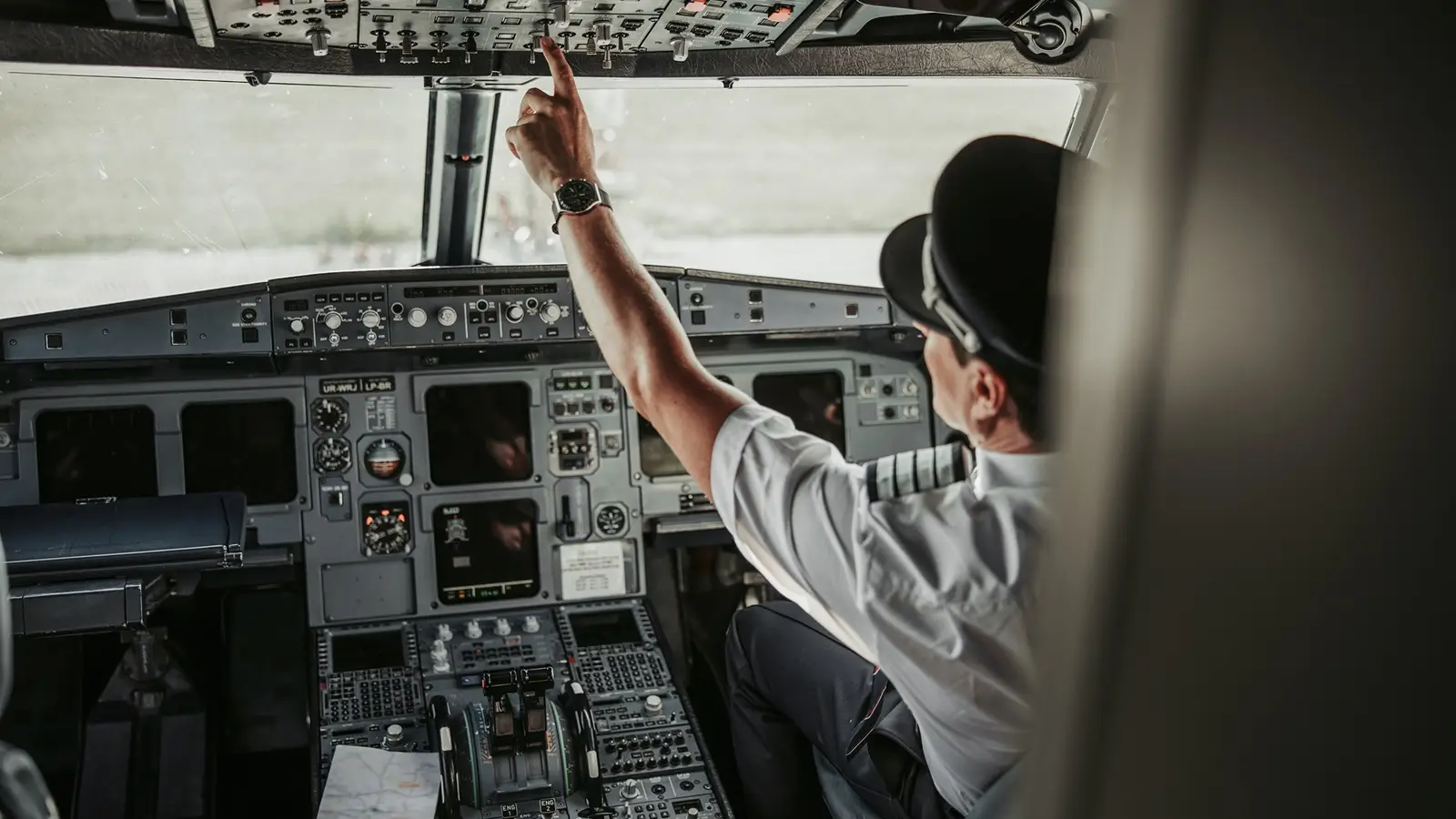
Pilots undergo rigorous training to ensure they are capable of handling any situation that may arise. One key area of training is how to handle emergencies, which, although rare, must be dealt with expertly to ensure the safety of everyone onboard. Pilots repeatedly train for various emergency situations, such as bird strikes, medical emergencies, engine failures, or onboard fires, so they understand exactly what to do when it happens in real life.
This involves a lot more than running through emergency scenarios on a simulator, although simulation-based training is a crucial part of emergency training. From day one, pilots are drilled to know their aircraft inside and out, from its performance limits to the precise steps of each emergency checklist. They also receive training on more general intelligence factors, such as decision-making, communication principles and keeping a cool head, to ensure they are optimally capable of handling everything effectively.
Aviation Emergencies: Rare But Real
Emergency situations onboard an aircraft can present themselves in a variety of ways, which is why pilots must be so comprehensively trained to respond to them. Some can be the result of a technical failure with the aircraft, while others can be situational or passenger-related. Given the dangers of losing control of an aircraft, even momentarily, pilots must know exactly what to do in each situation.
While most pilots won’t ever find themselves in an emergency situation, there are over 350,000 pilots in the global workforce, so it will inevitably happen to a small number of them. Aircraft typically squawk the code ‘7700’ to communicate they are in distress – 7700 is the international code for general emergency and will immediately alert ATC to the situation. However, some emergencies are so demanding and time-critical that the crew may not even have the time to squawk this.
The usual procedure during an emergency is to find the nearest suitable diversion airport. Depending on the nature of the emergency, the aircraft will ordinarily need to land as soon as possible, particularly during technical problems or medical situations. Emergency services on the ground are also notified of the ongoing situation and will provide support for the aircraft once it has landed. Being prepared can often be the difference between life and death, whether this is fire trucks to extinguish an engine fire or medical teams to treat injured passengers.
Simulator Training For Emergencies
The core of emergency training takes place in simulators, offering an unrivaled level of realism for emergencies. Full Flight Simulators certified at Level C and D are the most true-to-life, giving training pilots full immersion into the cockpit environment. Featuring six degrees of motion and highly detailed visual systems, simulators replicate the real-life cockpit experience.
Scenario-Based Training (SBT) has transformed how pilots go through specific situations, which can be programmed into simulation sessions. This gives pilots direct experience of scenarios like engine failure or fires, rapid decompression, system failures, or turbulence. As explained in a safety briefing by the Federal Aviation Administration (FAA),
“Pilots who train with SBT more quickly develop the habit of carefully and thoughtfully considering all aspects of the flight as it progresses. They also learn the critical skill of making, and carrying out, realistic contingency plans to deal with unexpected or emergency events.”
Pilots don’t just drill these scenarios early in their careers, either – they are required to periodically undertake emergency training, ensuring their understanding and capabilities remain sharp throughout their piloting years. Although not full simulators, Flight Training Devices (FTDs) are also an important tool to replicate flight systems.
Memory Items And Checklists
Emergency events can happen very suddenly, sometimes giving pilots just seconds or minutes to react and make the right decisions. While pilots have written emergency checklists to consult during such events, there are immediate actions they need to take in certain situations that come from memory.
These ‘Memory Items’ are the things pilots must do from memory during time-critical events, such as engine fires or cabin depressurizations, without referring to a written checklist. For example, in an engine fire, pilots will idle the thrust lever and cut fuel to the affected engine before pulling the fire handle to extinguish the fire. This is a sequence that should happen as soon as possible to minimize a catastrophe, so knowing these steps by heart is much better than having to consult a checklist.
Once these items have been actioned, pilots will then consult the full written emergency checklist and ensure nothing has been missed. Pilots follow a call-and-response model during checklists that requires both pilots to confirm steps taken, helping to reduce the chances of individual human error. Checklists are typically found in the Quick Reference Handbook, but can also be integrated into flight displays on more modern aircraft.
Aviate, Navigate, Communicate
The mantra of ‘Aviate, Navigate, Communicate’ is to emphasize the primacy of keeping the aircraft under control before anything else. Loss of aircraft control is by far the greatest threat in an emergency. Above all else, a pilot’s duty is to maintain safe and stable flight, and this comes before worrying about the route of the aircraft or communicating with air traffic control (ATC).
Once pilots have satisfied the Aviate requirements, they need to decide where to go next, which comprises the Navigate part. An emergency situation will almost always lead pilots to land at the nearest suitable airport, called the diversion airport. They also need to be aware of the surrounding terrain or anything else that might put the aircraft in jeopardy.
Only after the aircraft is safely under control and on the correct course do pilots move to the final stage, which is Communicate. This is where squawking 7700 comes in and communicating the nature of the event with ATC. Pilots will also use this stage to communicate with the cabin crew, as well as with their airline operations team. This hierarchy of priorities ensures that pilots focus on the most critical thing of all, which is keeping the aircraft flying safely.
How Common Are Flight Emergencies?
On any given day in global aviation, there will be at least a few 7700 incidents. According to Flightradar24, in the 14 months between December 2022 and the middle of March 2024, there was a weekly average of 36 general emergency codes squawked by commercial airlines, working out at more than five per day. It is important to understand that the vast majority of 7700 calls are made out of precaution, typically involving scenarios like smoke or odor reports or minor system errors, and ultimately end safely.
A 7700 call is not the same as pilots issuing a spoken “MAYDAY” call over the radio. This is reserved only for the most serious, life-threatening emergency scenarios and gives pilots absolute priority with ATC. There is also a “PAN-PAN” call, which is used for serious events but not those at the highest level that would warrant a Mayday call.
In terms of emergency events that cause injuries or fatalities, the incidence rate is very low. The most common cause of passengers being hurt or dying is from in-flight medical emergencies or turbulence, although deaths in the latter case are very rare. The last turbulence-related death on a commercial flight happened onboard Singapore Airlines Flight 321 in May 2024, involving an older man who suffered a heart attack. This death was the first related to turbulence in around 25 years, so they are very rare events.
Modern Aircraft Safety
Commercial jetliners today are far safer than they were in previous generations. The rate of injuries and fatalities in commercial aviation has been steadily dropping over the decades, with data from ICAO showing accident rates have generally remained steady between 2015 and 2025. However, modern accident rates are a fraction of what they were in previous decades.
Modern aircraft are a significant part of that, with fly-by-wire (FBW) systems ensuring pilots don’t exceed the aircraft’s performance boundaries. They are also much more reliable from a mechanical and maintenance standpoint, helping to prevent accidents due to mechanical failure, which was a leading cause in prior decades.
Spearheaded by ICAO, aviation has also taken significant steps to incorporate a data-driven approach to safety, with incidents logged and analyzed to ensure the industry learns collectively from past incidents. However, no matter how safe aircraft become, pilots will always need rigorous safety training to act effectively during emergencies.



